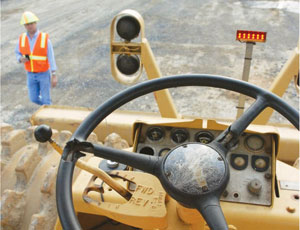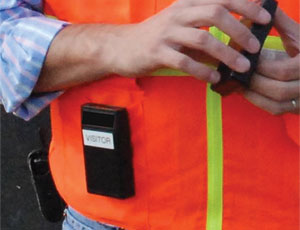Researchers reported results of two key studies—one on using real-time technology to reduce the danger of working around construction equipment and another on the impact of project-site leadership on safety—to the Construction Industry Institute’s annual conference held Aug. 4-5 in Orlando, Fla.


Several safety-related topics were discussed at the event, including technology-based safety, which members and academics are researching in an effort to improve impressively low but stagnating incident rates. The rate for CII member firms has hovered around 0.60 for several years.

HALLER
Rick Haller, vice chairman of the Austin, Texas-based institute and president and COO of Walbridge, Detroit, says enhancing worker safety always will be a priority for CII, including the goal of a zero-incident rate. “Until we get to a predictable zero—where we can predict where the safety risks are, put training in place to avoid those risks and prevent any incidents or injuries on the jobsite—we haven’t figured out safety,” he says.

MCKINNEY
To help broaden the impact of CII research and best practices on a range of issues including safety, the institute formed an alliance with the Construction Management Association of America, McLean, Va. David McKinney, CII chairman and vice president of nuclear construction for Southern Co., Waynesboro, Ga., says, “It’s a collaborative effort to combine the CMAA certification process with some of the CII basics.” Members of both groups will have access to publications and the professional development tools and training offered by the two groups.
New research presented at the conference included a study on real-time proactive safety systems, such as worker warning devices used on project sites. Jimmie Hinze, a professor at the University of Florida’s School of Building Construction in Gainesville, said the team’s investigation of 17 years of construction accident records showed that roughly 25% of fatalities involved worker interaction with equipment. Over that period, Hinze said 289 fatalities involved either the operator or site worker being unable to see or otherwise sense the looming hazard. Some 55% of these fatalities involved blind spots, and an estimated 57% involved equipment moving in reverse.
The real-time warning system, which costs about $1,000 per equipment unit and up to $500 per worker, uses an electronic device placed on the equipment and on an employee. It sounds a warning when workers and equipment operators come in close proximity. An outfitted fleet of equipment also would warn operators of their proximity to each other.
Jason Valliere, a member of the research committee and safety officer for Canada-based engineer SNC-Lavalin Inc., said the equipment can be outfitted to log data and record near misses for future analysis, as well as adjustments to the site layout or work methodologies.
Another team worked on further improvements to safety through site leadership by addressing company cultures rather than practices and procedures. Team member Paul Logan, engineering manager with Eli Lilly & Co., Indianapolis, said the vast majority of injuries today are not the result of unsafe conditions but unsafe acts.
“Management needs to focus on instilling safety as a core value and not just as a priority,” Logan adds. “If safety is thought of as a priority, it can and will get reprioritized in the face of other things,” he says. Workers under the age of 30 present additional challenges: The team’s research found that workers in this age group were less likely to believe that all injuries are preventable or that an injury-free workplace is possible.



Post a comment to this article
Report Abusive Comment